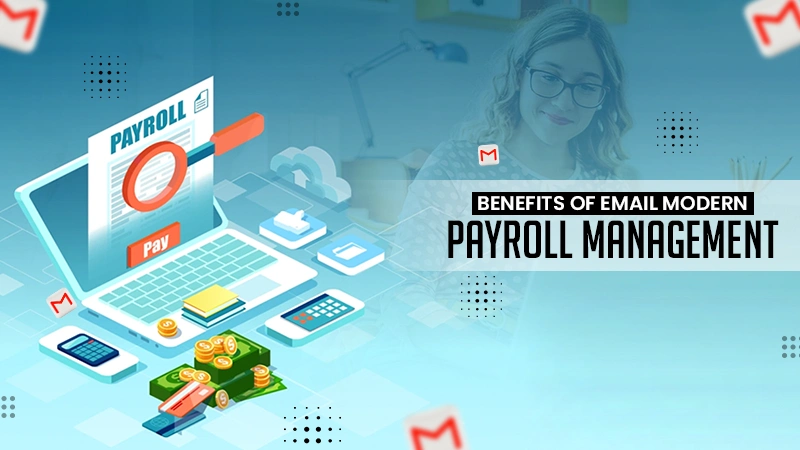How to Avoid and Manage Internal Phishing Emails
When most people think of phishing emails, they think of those messages that ostensibly appear to be from legitimate sources like PayPal or Amazon, often claiming that your account has been compromised, or you’re due some kind of refund.
But, what about internal phishing scams? Receiving an email from your HR department containing an attachment might be a little unusual, but not uncommon. Well, this is where the danger lurks, because interacting with these types of emails can be disastrous.
Employee training is the best way to avoid and manage internal phishing scams. Here’s all you need to know.
1. Conduct employee training on phishing emails
You might think that you’re too smart to fall victim to a phishing attack, but as cybercriminals become more sophisticated in their tactics, spotting legitimate emails can be very tricky.
Statistics by Norton reveal that around 88% of organisations face spear phishing attacks each year, meaning businesses are targeted almost every day, and this influx of emails from scammers can make them even harder to spot!
It’s important to educate your employees on the common red flags that often pop up in scam emails. This could be emails coming from external email addresses or an unusual sense of urgency within the tone of the email. Training sessions are a great way of getting everyone to the same level of understanding, whether you conduct these yourself or have an external trainee run the session.
For businesses with an international team, where the reliance on digital communication is heightened, training becomes even more critical. Remote employees may be more vulnerable to phishing attacks due to the absence of immediate oversight and the reliance on email for communication. Therefore, providing comprehensive training on identifying and handling phishing emails is essential for safeguarding remote team members and your wider business.
2. Implement multi-layered security measures
Even if an employee falls victim to an internal phishing email, with good security measures in place the effects can still be mitigated. A multi-layered approach to security creates multiple barriers that cybercriminals must overcome, increasing the likelihood of detection and intervention before sensitive data is compromised.
For example, multi-factor authentication (MFA) adds an extra layer of protection by requiring users to provide multiple forms of authentication, such as a password and a unique code sent to their mobile device. Using the Google Authenticator app or similar is a great way to provide 2-step verification which makes it significantly harder for scammers to gain access to accounts, as they would need to bypass additional layers of authentication.
Your online security measures should be regularly updated and improved to stay ahead of evolving threats. Conducting regular security audits and assessments can help identify vulnerabilities and weaknesses in your existing security infrastructure so you’re better prepared.
3. Encourage employees to speak up
Encouraging employees to speak up is a simple but essential way of avoiding phishing emails. Creating an environment at work where employees feel comfortable questioning the legitimacy of an email, especially if it appears to be from a high-ranking authority like the CEO, manager, or HR, is crucial.
Employees should be reassured that it’s better to be cautious and inquire about suspicious emails than to risk falling victim to a phishing attack. Providing clear channels for reporting phishing attempts, such as designated email addresses or reporting platforms, helps streamline the process and encourages prompt action.
Fostering a culture of openness and communication regarding cybersecurity issues ensures that employees feel empowered to play an active role in protecting the business. Regular reminders and training sessions emphasizing the importance of vigilance and reporting suspicious activities can reinforce this culture of awareness and accountability.
4. Run fake phishing tests to keep employees vigilant
It’s not uncommon for IT departments to roll out fake phishing emails to see if they’re spotted and reported by the wider team. This can keep employees vigilant, reinforce their awareness of phishing threats, and test the effectiveness of training including where additional education or reinforcement is needed.
It’s important to ensure that fake phishing tests are conducted in a constructive and supportive manner, emphasizing the goal of improving overall cybersecurity awareness rather than singling out individuals for blame.
Providing feedback and educational resources following the tests can help employees learn from their mistakes and become more resilient against real phishing attacks in the future. It might be a good idea to add cybersecurity expectations to your employee handbook. That way everyone understands their responsibilities and how cybersecurity infractions follow the same rules as physical security responsibilities.
How to spot internal phishing emails
Scammers are always finding new ways to attack businesses from the inside and while some of their tactics are very obvious, others are much subtler.
Here are some things your employees need to look out for:
Common types of internal phishing scams
- Emails from CEOs requesting money or gift cards: Treat any email from a CEO requesting financial transactions or sensitive information with extreme caution. Verify the authenticity of such requests through a separate communication channel or directly with the CEO’s office before taking any action.
- Messages from HR departments: HR email scams often contain a malicious attachment or link that, once clicked, will install malicious software onto your computer or device. Double-check with your colleague directly before taking action!
- Account updates or suspension emails: Exercise caution when receiving emails claiming to be account updates or suspension notices from service providers. Always check the status of your account internally before providing any information or clicking on any links.
Red flags to look out for in internal phishing emails
- Unusual email addresses: If you receive an email that’s flagged as external but pretending to be a colleague or there are mistakes in the email address, always check with them or your manager before responding.
- Unsolicited requests for personal or sensitive information: If you receive an email asking for personal or sensitive information out of the blue, especially if it’s from an unexpected source, always verify the request with the supposed sender.
- Urgency or threats demanding immediate action: Be cautious of emails that pressure you to take immediate action or threaten negative consequences if you don’t comply. Take a moment to verify the legitimacy of the request before doing anything!
- A change in tone or manner that isn’t usual: If you notice a sudden change in the tone or manner of communication from a colleague or superior, especially if it seems out of character or unusual, be wary!
- Poor spelling and grammar: Emails riddled with spelling mistakes, grammatical errors, or awkward language may indicate a phishing attempt.
- Mismatched URLs or suspicious links: URLs that seem mismatched or suspicious, could lead to phishing websites or malware downloads.
Managing internal phishing emails is an eventuality you might think will never affect your business, but scammers will stop at nothing to get what they want. Stay aware, keep your employees well-trained, and have good security measures in place to keep your business as protected as possible! For more on cybersecurity, SEO, and email marketing, head to our blog archive here.
Thanks for reading.
Share














